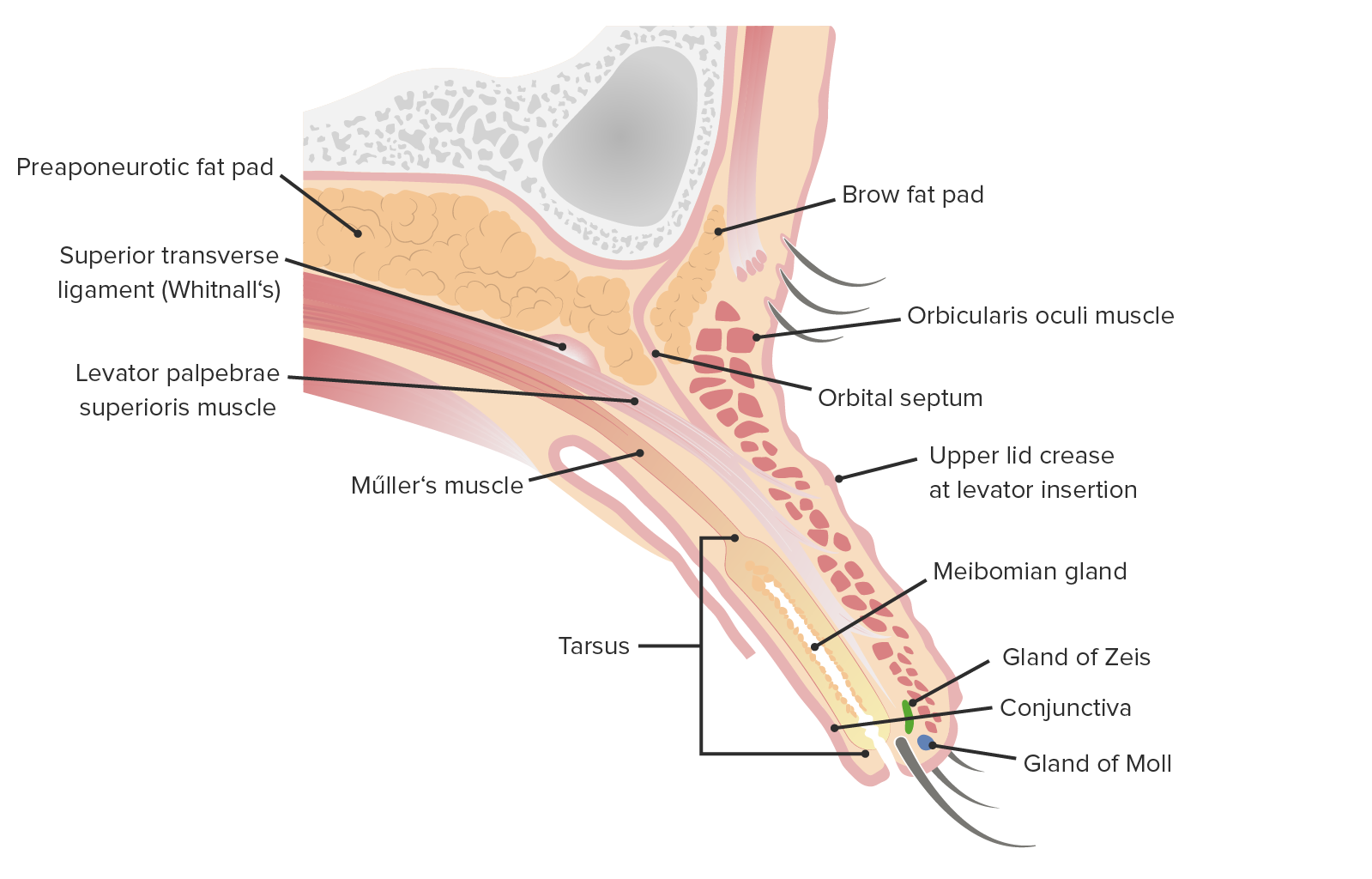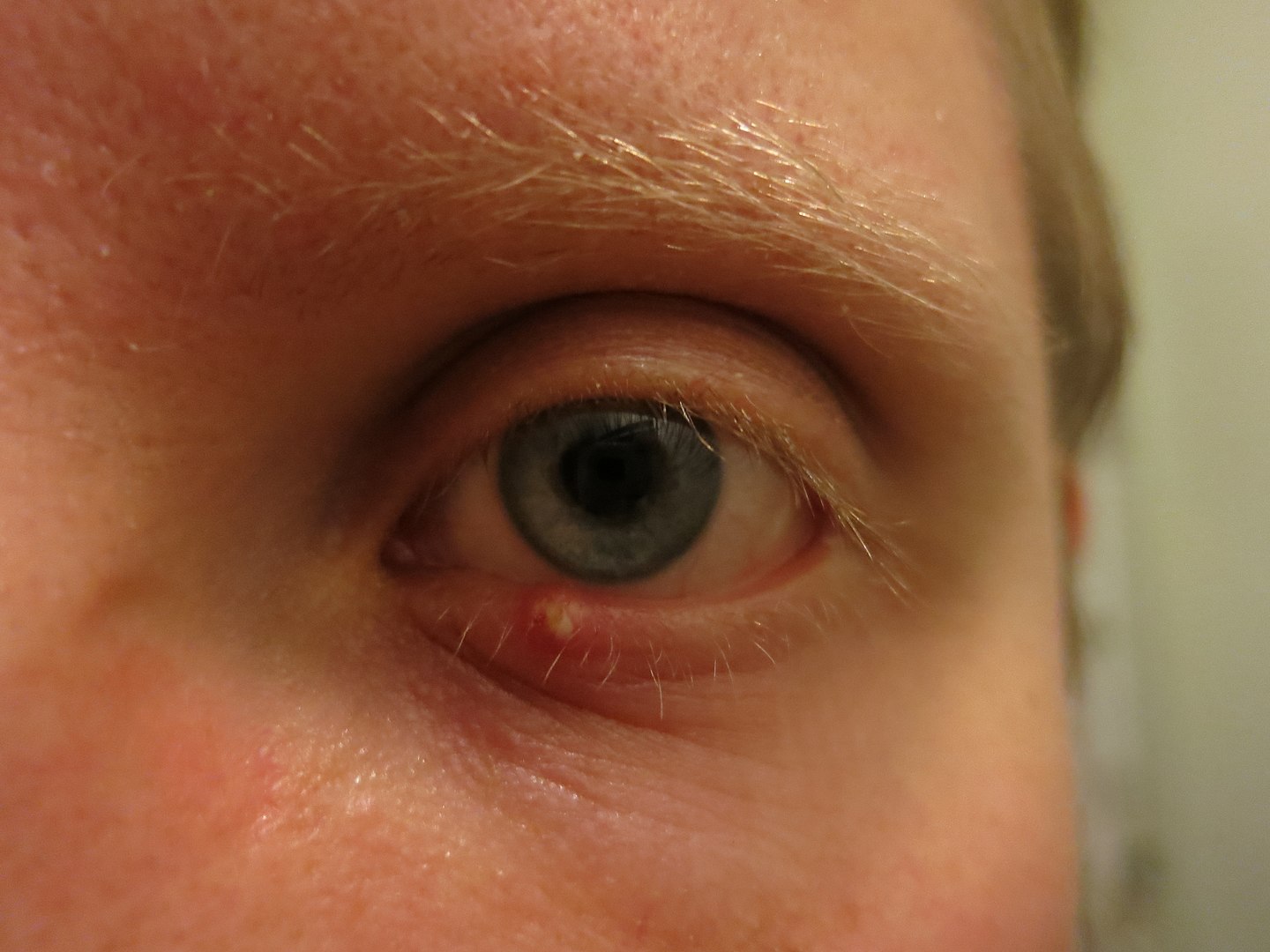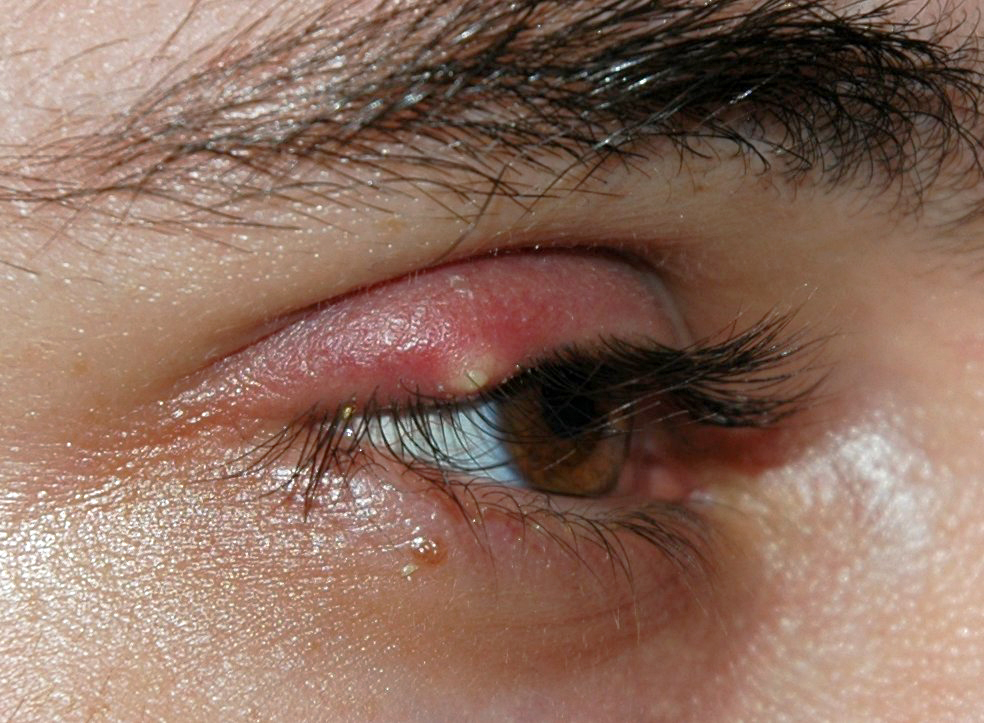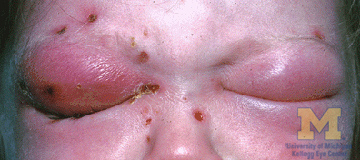A hordeolum is an acute infection affecting the meibomian, Zeis, or Moll glands of the eyelid. Stasis of the gland secretions predisposes the glands to bacterial infection. Staphylococcus aureus Staphylococcus aureus Potentially pathogenic bacteria found in nasal membranes, skin, hair follicles, and perineum of warm-blooded animals. They may cause a wide range of infections and intoxications. Brain Abscess is the most common pathogen. The condition presents as a painful, localized, erythematous nodule Nodule Chalazion in the anterior (external hordeolum) or posterior (internal hordeolum) lamella of the eyelid. A hordeolum usually resolves spontaneously and can be managed with warm compresses Warm Compresses Chalazion, massage, and lid hygiene. In certain cases of significant swelling Swelling Inflammation, topical antibiotics with steroids Steroids A group of polycyclic compounds closely related biochemically to terpenes. They include cholesterol, numerous hormones, precursors of certain vitamins, bile acids, alcohols (sterols), and certain natural drugs and poisons. Steroids have a common nucleus, a fused, reduced 17-carbon atom ring system, cyclopentanoperhydrophenanthrene. Most steroids also have two methyl groups and an aliphatic side-chain attached to the nucleus. Benign Liver Tumors may be needed. If a hordeolum does not resolve, the patient should be referred to ophthalmology for incision and drainage Incision And Drainage Chalazion.
Last updated: Dec 1, 2025

Sagittal cut of the upper eyelid
Image by Lecturio.| Name | Type | Opening location | Infection |
|---|---|---|---|
| Gland of Zeis | Sebaceous gland | Directly into the eyelash follicle | External hordeolum |
| Gland of Moll Gland of Moll Blepharitis | Modified sweat glands Sweat glands Sweat-producing structures that are embedded in the dermis. Each gland consists of a single tube, a coiled body, and a superficial duct. Soft Tissue Abscess | Between adjacent lashes | External hordeolum |
| Meibomian gland Meibomian Gland Chalazion | Modified sebaceous gland | Behind eyelashes | Internal hordeolum |

Man suffering from external hordeolum of the lower lid.
Image: “Stye” by Palosirkka. License: CC0 1.0
Upper eyelid hordeolum, illustrating a localized erythematous and swollen area.
Image: “Stye” by Andre Riemann. License: Public Domain
Photograph showing orbital cellulitis, a bacterial infection of the periocular tissues.
Image: “Orbital cellulitis” by Jonathan Trobe. License: CC BY 3.0Most hordeola resolve spontaneously, lasting up to 1–2 weeks.